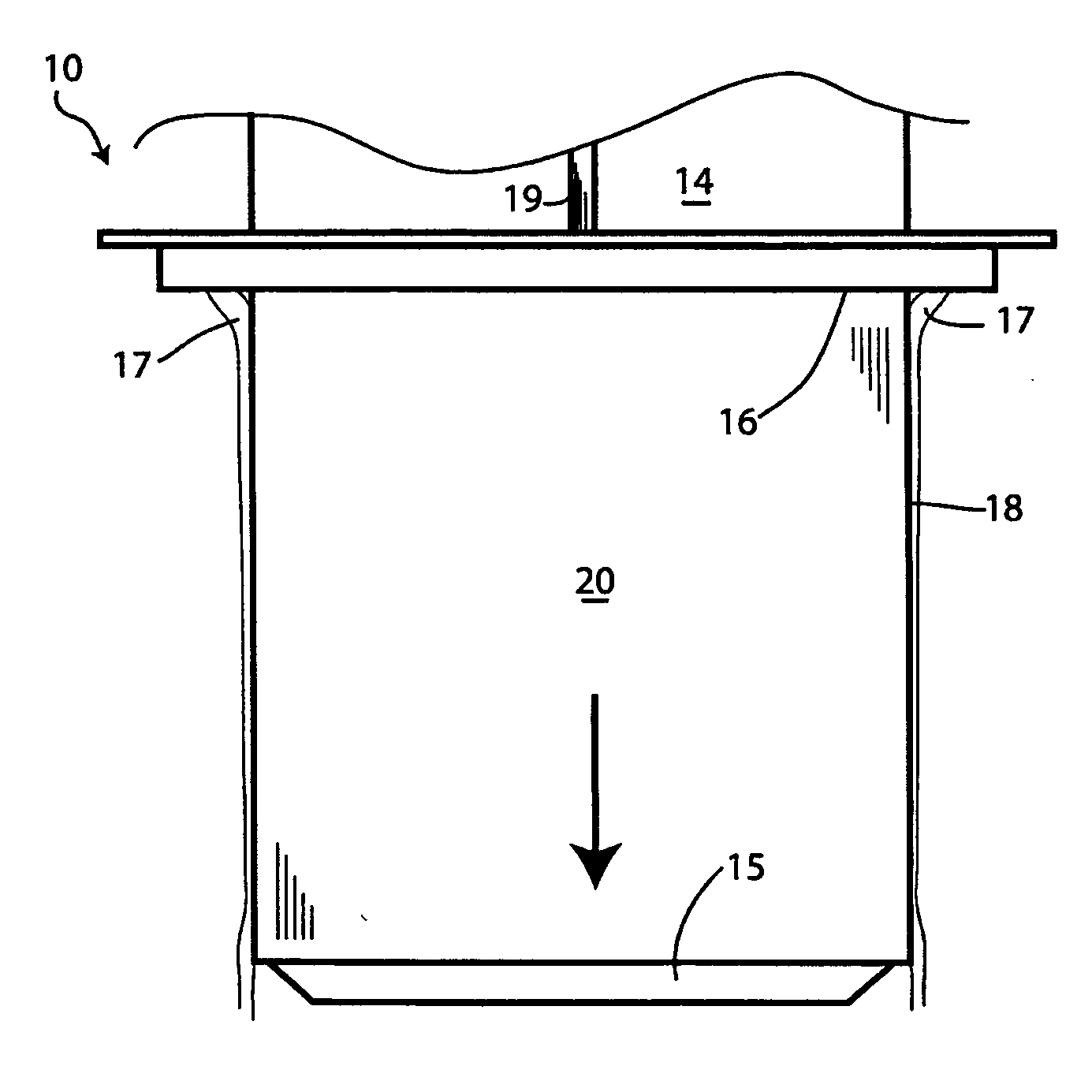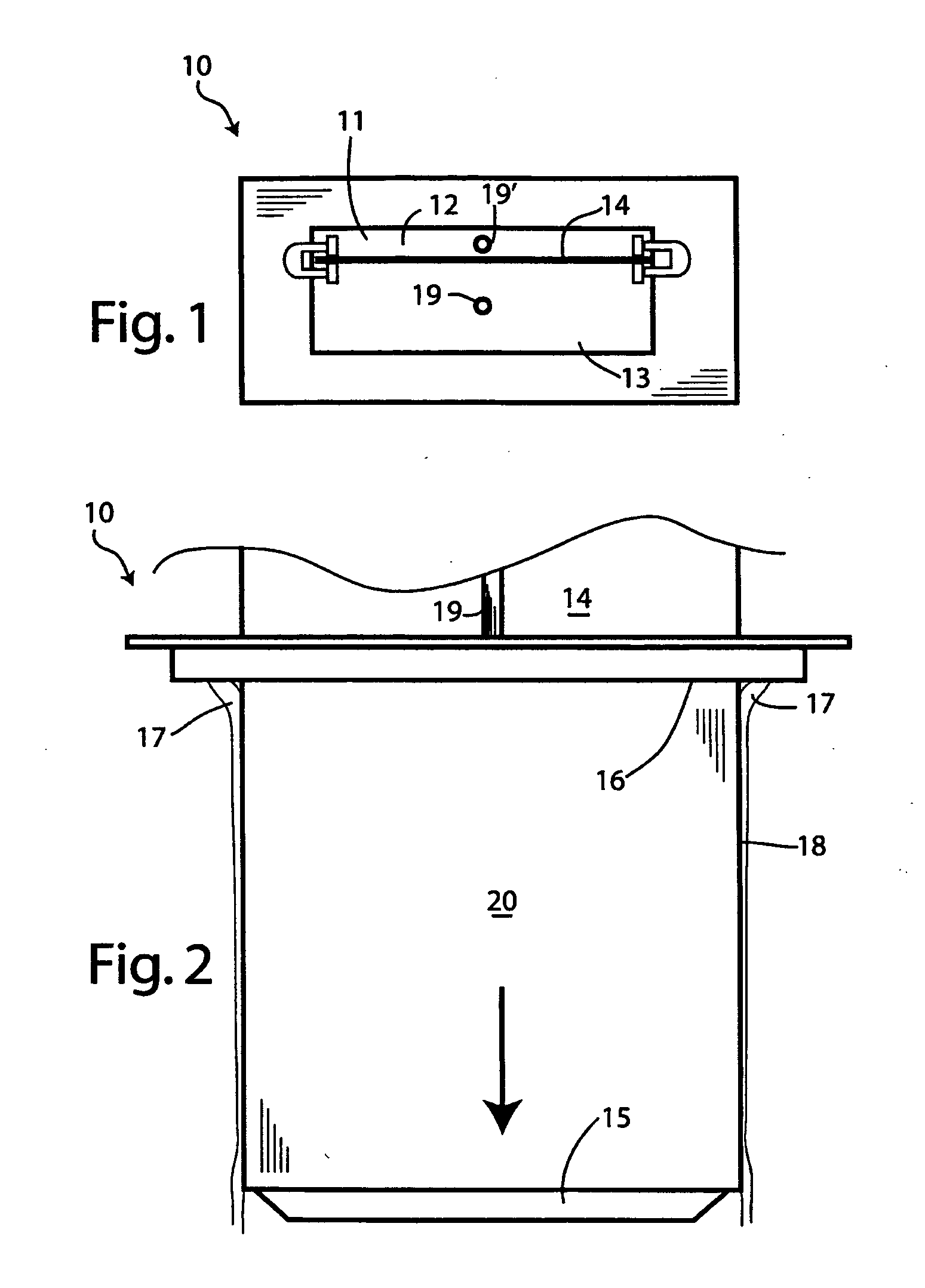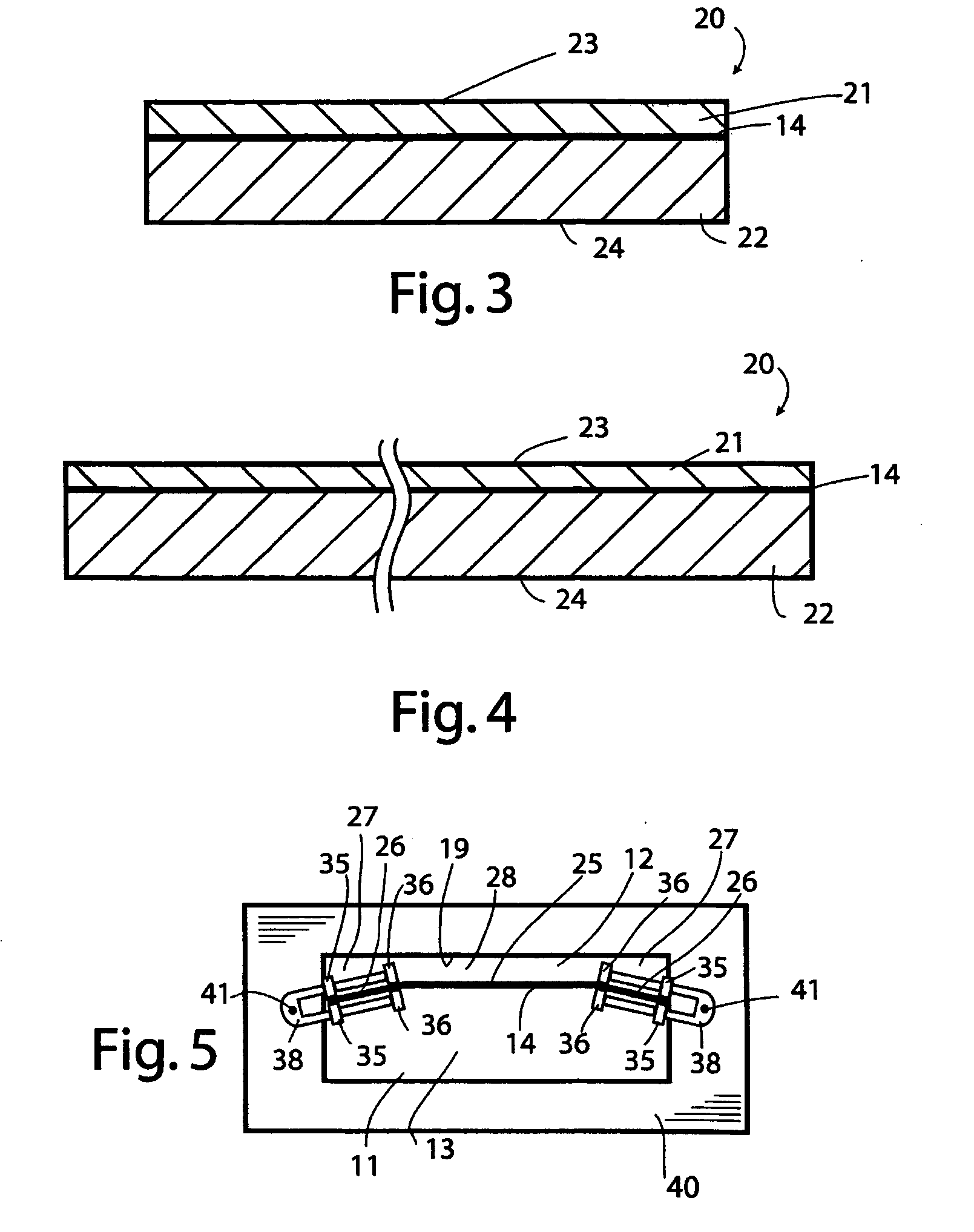Co-casting of metals by direct chill casting
a technology of metal layers and casting, applied in the field of casting metals, can solve the problems of affecting etc., and achieve the effect of reducing the production cost, and improving the quality of metals
- Summary
- Abstract
- Description
- Claims
- Application Information
AI Technical Summary
Benefits of technology
Problems solved by technology
Method used
Image
Examples
Embodiment Construction
[0028]FIGS. 1 and 2 of the accompanying drawings show a modification of the Kilmer et al. casting apparatus referred to above. It will of course be realized by persons skilled in the art that FIGS. 1 and 2 are greatly simplified and that a working version of the apparatus will require additional equipment and structures, all of which will be apparent to a skilled artisan.
[0029]FIGS. 1 and 2 show a rectangular direct-chill casting mold 10 having a mold cavity 11 which is divided into two mold chambers (i.e. metal feed chambers) 12 and 13 by a vertical divider member 14. The divider member 14 may be attached to a bottom block 15, which is positioned at a discharge end opening (i.e. an outlet) 16 of the mold cavity during start-up and is fed into the mold from above by a supporting and feed apparatus (not shown). The divider member 14 may be made of a suitable metal, e.g. aluminum, an aluminum alloy, or a clad aluminum product that preferably has a solidus temperature greater than the ...
PUM
| Property | Measurement | Unit |
|---|---|---|
| temperature | aaaaa | aaaaa |
| angle | aaaaa | aaaaa |
| angle | aaaaa | aaaaa |
Abstract
Description
Claims
Application Information
 Login to View More
Login to View More - R&D
- Intellectual Property
- Life Sciences
- Materials
- Tech Scout
- Unparalleled Data Quality
- Higher Quality Content
- 60% Fewer Hallucinations
Browse by: Latest US Patents, China's latest patents, Technical Efficacy Thesaurus, Application Domain, Technology Topic, Popular Technical Reports.
© 2025 PatSnap. All rights reserved.Legal|Privacy policy|Modern Slavery Act Transparency Statement|Sitemap|About US| Contact US: help@patsnap.com



